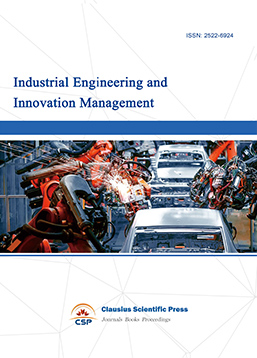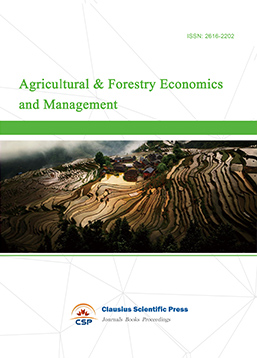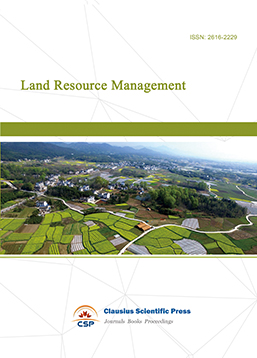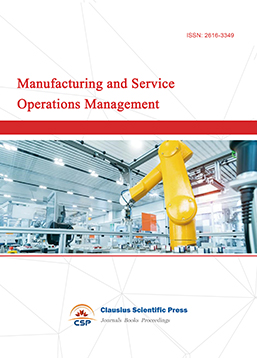Application and practice of AI technology in quantitative investment
DOI: 10.23977/infse.2024.050217 | Downloads: 4 | Views: 82
Author(s)
Shuochen Bi 1, Wenqing Bao 2, Jue Xiao 3, Jiangshan Wang 4, Tingting Deng 5
Affiliation(s)
1 D'Amore-McKim School of Business, Northeastern University, Independent Researcher Boston, MA, 02110, USA
2 Americold Logistics, LLC Atlanta, GA, 30319, USA
3 The School of Business, University of Connecticut, Independent Researcher Jersey City, NJ, 07302, USA
4 The Paul Merage School of Business, University of California, Irvine, Independent Researcher Salt Lake City, UT, 84121, USA
5 Simon Business School, University of Rochester, Independent Researcher Chantilly, VA, 20151, USA
Corresponding Author
Shuochen BiABSTRACT
With the continuous development of artificial intelligence technology, using machine learning technology to predict market trends may no longer be out of reach. In recent years, artificial intelligence has become a research hotspot in the academic circle, and it has been widely used in image recognition, natural language processing and other fields, and also has a huge impact on the field of quantitative investment. As an investment method to obtain stable returns through data analysis, model construction and program trading, quantitative investment is deeply loved by financial institutions and investors. At the same time, as an important application field of quantitative investment, the quantitative investment strategy based on artificial intelligence technology arises at the historic moment. How to apply artificial intelligence to quantitative investment, so as to better achieve profit and risk control, has also become the focus and difficulty of the research. From a global perspective, inflation in the US and the Federal Reserve are the concerns of investors, which to some extent affects the direction of global assets, including the Chinese stock market. This paper studies the application of AI technology, quantitative investment, and AI technology in quantitative investment, aiming to provide investors with auxiliary decision-making, reduce the difficulty of investment analysis, and help them to obtain higher returns.
KEYWORDS
Artificial intelligence; quantitative investment; Federal Reserve reserve; investment analysisCITE THIS PAPER
Shuochen Bi, Wenqing Bao, Jue Xiao, Jiangshan Wang, Tingting Deng, Application and practice of AI technology in quantitative investment. Information Systems and Economics (2024) Vol. 5: 124-132. DOI: http://dx.doi.org/10.23977/infse.2024.050217.
REFERENCES
[1] Sun Shouchao. Research on the application practice of 5G + AI technology in financial media production [J]. China Broadband, 2022, 18 (5): 3.
[2] Wu Jing, Zhang Sen, Liu Hongbo. Application and countermeasures of blockchain technology in bidding and bidding [J]. Engineering and Management Science, 2022, 4 (2): 159-161.
[3] Zhao Hongye. Research on the application of AI technology in computer network technology [J]. Information Industry Report, 2023 (9): 0138-0140.
[4] Liu Yanhui. Analysis of the application of big data and AI technology in new media communication channels [J]. China Media Technology, 2022 (5): 70-72.
[5] Zhang Huiguo. AI and machine learning in financial decision-making and risk management [J]. Today, 2023 (20): 0090-0093.
[6] Zhu, M., Zhang, Y., Gong, Y., Xu, C., & Xiang, Y. Enhancing Credit Card Fraud Detection: A Neural Network and SMOTE Integrated Approach.[J]Journal of Theory and Practice of Engineering Science,(2024).4(02), 23–30. https://doi.org/10.53469/jtpes.2024.04(02).04.
[7] Mengran Zhu, Ye Zhang, Yulu Gong, Kaijuan Xing, Xu Yan, Jintong Song. Ensemble Methodology: Innovations in Credit Default Prediction Using LightGBM, XGBoost, and LocalEnsemble[J]Computational Engineering, Finance, and SciencearXiv:2402.17979v1 [cs.CE] 28 Feb 2024 https://doi.org/10.48550/arXiv.2402.17979.
| Downloads: | 7393 |
|---|---|
| Visits: | 146449 |
Sponsors, Associates, and Links
-
Accounting, Auditing and Finance

-
Industrial Engineering and Innovation Management

-
Tourism Management and Technology Economy

-
Journal of Computational and Financial Econometrics

-
Financial Engineering and Risk Management

-
Accounting and Corporate Management

-
Social Security and Administration Management

-
Population, Resources & Environmental Economics

-
Statistics & Quantitative Economics

-
Agricultural & Forestry Economics and Management

-
Social Medicine and Health Management

-
Land Resource Management

-
Information, Library and Archival Science

-
Journal of Human Resource Development

-
Manufacturing and Service Operations Management

-
Operational Research and Cybernetics


 Download as PDF
Download as PDF